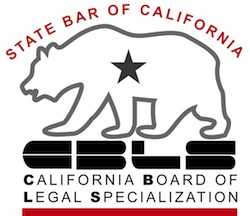Civil litigation often decides who owes what to whom. Bankruptcy law can impact ongoing litigation and what happens thereafter to those who owe. And to those to whom money is owed.
So it behooves litigators to have a good grasp on how bankruptcy works.
If you’re defendant’s counsel, you want to assess your client’s options should the case go badly.
If you’re plaintiff’s counsel, you need to understand what a bankruptcy filing does to your client’s claim. So here’s Beginning Bankruptcy For Litigators.
Start with the stay
The automatic stay is the most well known feature in US bankruptcy. An injunction issues, automatically, on the filing of a bankruptcy case. It enjoins the filing or continuation of actions to collect a debt from the debtor or the debtor’s property.
The stay applies regardless of notice to affected parties. However, damages for violation of the stay are only available if the actions challenged were knowing and willful.
Actions taken in violation of the stay are void.
The stay doesn’t affect lawsuits brought by the debtor. However, who controls pending litigation may be an issue when the debtor is the plaintiff and a trustee has been appointed.
Except for some instances in Chapter 13, the stay only protects the debtor and the debtor’s property. If the debtor is only one of several defendants, bankruptcy does not prevent continuation of an action against other defendants. Nor does the stay prevent discovery against the debtor as if he were a third party.
Relief from the stay can be sought by motion. Since a basic premise of bankruptcy is the consolidations of the debtor’s financial affairs in a single court, a party seeking relief must articulate strong reasons why the debtor should be exposed to continuing litigation in another court.
Removal to bankruptcy court
Removal of pending actions to bankruptcy court furthers the policy of consolidating debtor/creditor disputes in a single forum.
Actions involving the debtor in a bankruptcy case may be removed to bankruptcy court, or more technically, to the district court of which the bankruptcy court is a branch. They’re usually referred to the bankruptcy court for trial.
Federal Rule of Bankruptcy Procedure 9027 provides a guide to procedure for removal.
Priority for payment in bankruptcy
Not all creditors are created equal in bankruptcy.
If a bankruptcy estate has funds to distribute, the order of payment to unsecured creditors is provided in Bankruptcy Code Section 507. The Code gives priority to family support, recent wage claims, and recent taxes, among others. Claims in a superior category must be paid in full before payment to creditors in the next junior category.
The general principal is that all unsecured claims without priority share any available distribution pro rata.
So the filing of bankruptcy may not only temper the advantages of diligent prosecution of a claim against the debtor, it may subordinate the claim to other kinds of claims that have priority.
Role of the trustee
The trustee in each chapter of bankruptcy has a different role. A trustee in Chapter 7 takes control of all of the debtor’s assets, with an eye to turning non exempt assets into cash for creditors.
The Chapter 13 trustee is largely a disbursing agent, collecting monthly payments from the debtor and paying them out to those with allowed claims. The debtor remains in possession and control of his assets.
In Chapter 11, the debtor most often performs the role of the trustee, operating as a fiduciary for his creditors.
Is there a discharge
The availability of a discharge of the claim at issue should color your litigation strategy.
For individuals, the statutory starting point is that unsecured claims are dischargeable. The statute then calls out the exceptions to discharge, including exceptions for debts incurred by reason of fraud or other dishonesty; conversion, breach of fiduciary duty; and intentional torts.
Note that the creation of the debt must have its roots in bad behavior; dodgy actions after the debt arises may not make the debt nondischargeable.
The bankruptcy discharge eliminates the debtor’s personal liability for a debt. Absent specific action by the bankruptcy court, liens survive the discharge as a charge on the assets to which the lien attached at the commencement of the case. A lien supporting a discharged debt doesn’t attach to newly acquired assets.
Corporations get discharges only in a Chapter 11 reorganization. Corporations in Chapter 7 just get liquidated; after the case is closed, the debt remains a valid obligation of a corporate shell largely without valuable assets.
Issue preclusion
Defendants facing litigation over claims that might be non dischargeable in bankruptcy might consider whether to defend in state court and then again in bankruptcy court. The standards for fraud, for example, are narrower for exception to discharge than they are in other venues.
Without findings of fact that mirror bankruptcy law, the parties may have to relitigate the claim in bankruptcy to establish non dischargeability.
Unliquidated claims in Chapter 13
Chapter 13 is available only to individuals whose liquidated debts fall below certain caps. There are separate caps for secured debt and unsecured debt.
Claims that are unliquidated at the commencement of the case don’t count against the debt limits. So, a preemptive filing may get a defendant the benefits of Chapter 13 notwithstanding the possibility of owing a disqualifyingly large sum at the end of non bankruptcy litigation.
More
True story of business litigation controlled by Chapter 13






